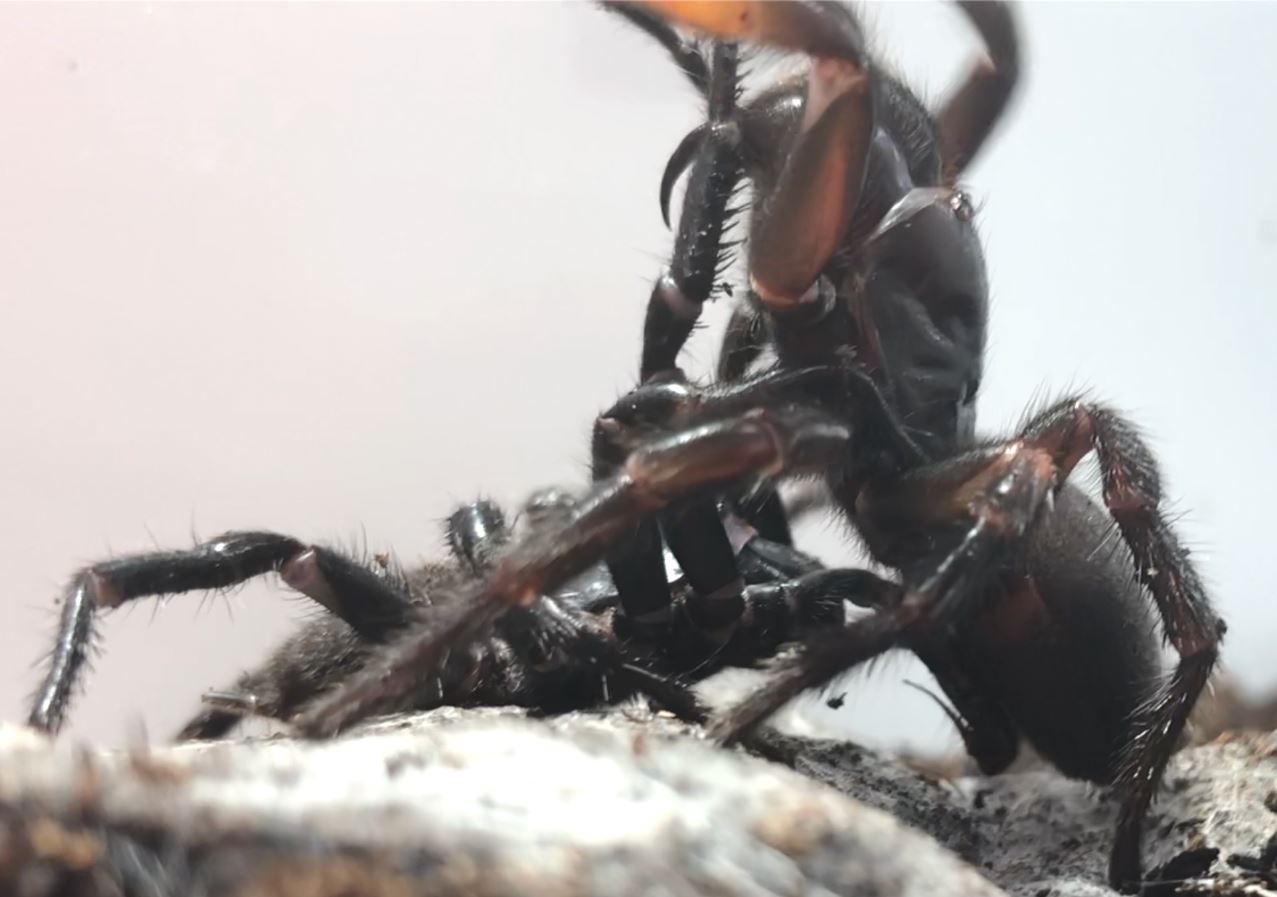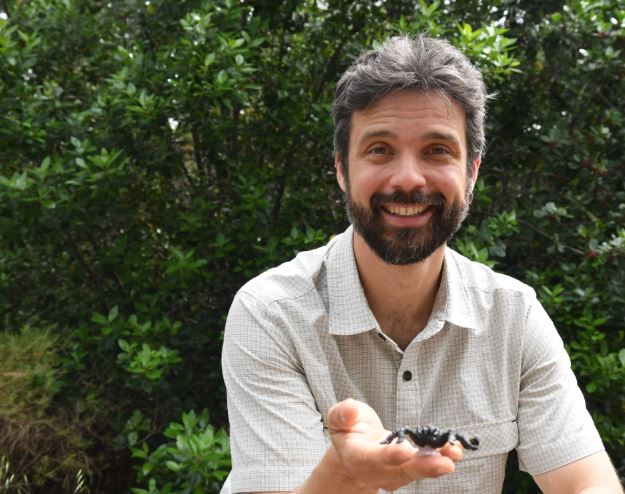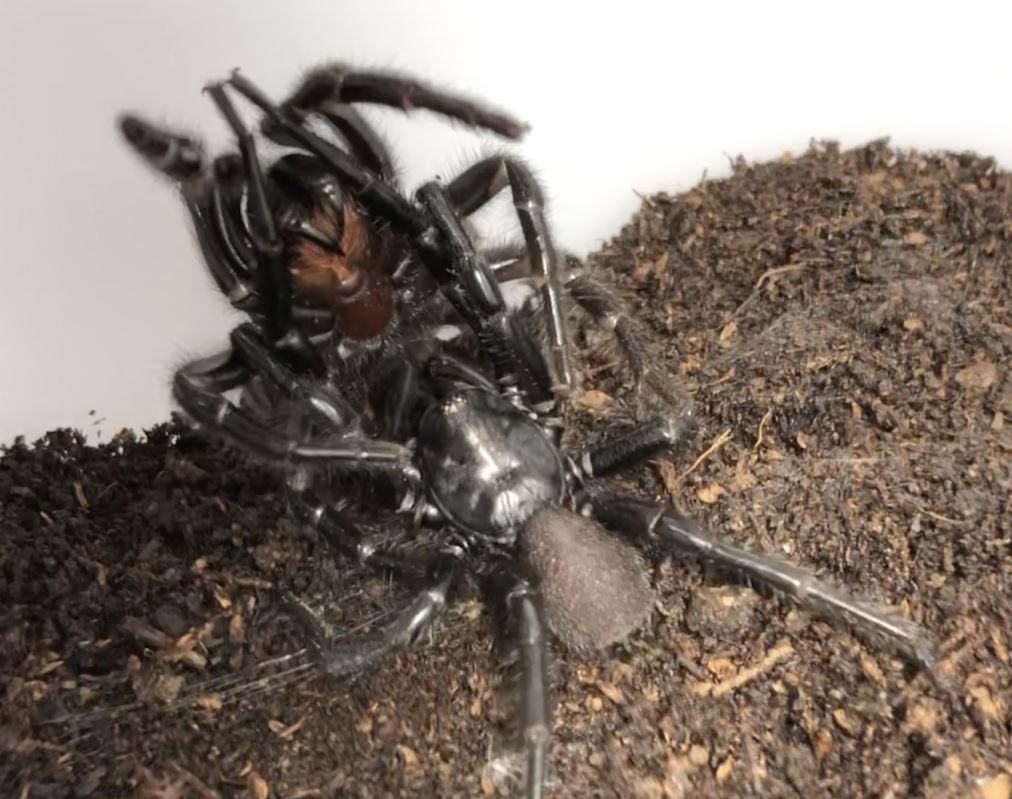
he complex mating rituals of the Sydney funnel-web spider have now been described in detail for the first time, with sexual routines including leg and body vibrations and female lifting filling a missing link in the study of spiders.
Compared to studies of more diverse and visual spiders such as jumping spiders, crab and wolf spiders and orb weavers, the intriguing courtship behaviour and mating systems of the highly venomous, ground-dwelling Sydney funnel-web (Atrax robustus) have been described by German and Australian experts, including Flinders University ecologist Dr Bruno Buzatto.
"While the high level of toxicity and development of anti-venom has seen the funnel-web studied in the past, little is actually known about its ecology," says Dr Buzatto.
"This is the first reconstruction of mating behaviors in funnel-web spiders where the behavioural repertoire is difficult to document due to the concealed life in funnel-shaped webs that are built in soil and leaf-litter habitats."

Starting with the male's elaborate display outside a female burrow, videos have been collected to describe male and female funnel-web behaviours in captivity inside and outside their burrows in a new article published in the Journal of Zoology.
The study covers new ground on pre-copulatory courtship and sexual behaviours including the chase, leg and body displays and lunge before lifting the female ahead of final copulation to reproduce.
"Female Sydney funnel-web spiders appear to remain quiescent during mating but some copulations ended with the male being chased away by the female," says Dr Buzatto, adding cannibalism in these spiders is rare and probably more likely in captivity rather than in the wild.
The study - by experts from Flinders University, Hamburg University, Museum of Nature Hamburg and the Australian Reptile Park in NSW - also provides fresh insights into the use of the male funnel-web spider's 'clasping spurs' located on their second pair of legs.
"It has been assumed that the Sydney funnel-web has these mating or clasping spurs to keep the female upright while they mate - so the female cannot attack, kill or eat the male.
"However, our study suggests the spurs are used to pull the female towards the male and keep them there - and probably have more a sexually selective function than one to avoid cannibalism."

The spiders used in the study were part of the breeding and venom collecting program run at the Australian Reptile Park in Somersby, New South Wales. Different mating pairs were filmed in 451 videos and 165 minutes of footage, with the average 20mm adult males and 27.5mm females commonly venturing from their own funnel-web burrows for mating.
"There is a gap in our knowledge about sexual behaviour in male and female funnel-webs and other mygalomorphs (including tarantulas and trapdoor spiders) so we hope this paper inspires future studies in this gap in information."
Australia has a number of different funnel-web spider species.
The new article, Mating behavior of the Sydney funnel-web spider (Atracidae: Atrax robustus) and implications for the evolution of courtship in mygalomorph spiders (2023) by Svea-Celina Frank, Kane Christensen, Ricardo Lourenço, Danilo Harms and Bruno A Buzatto has been published in the Journal of Zoology DOI: 10.1111/jzo.13070
First published: 12 May 2023 https://doi.org/10.1111/jzo.13070
Acknowledgements: This study was supported by National Geographic Society (project number GR-000046126) and Australian Geographic Society (103961107).






